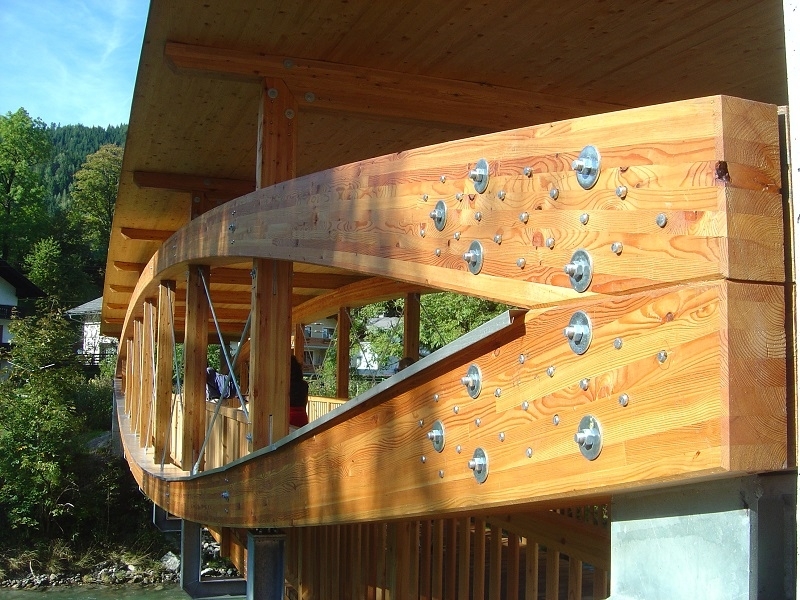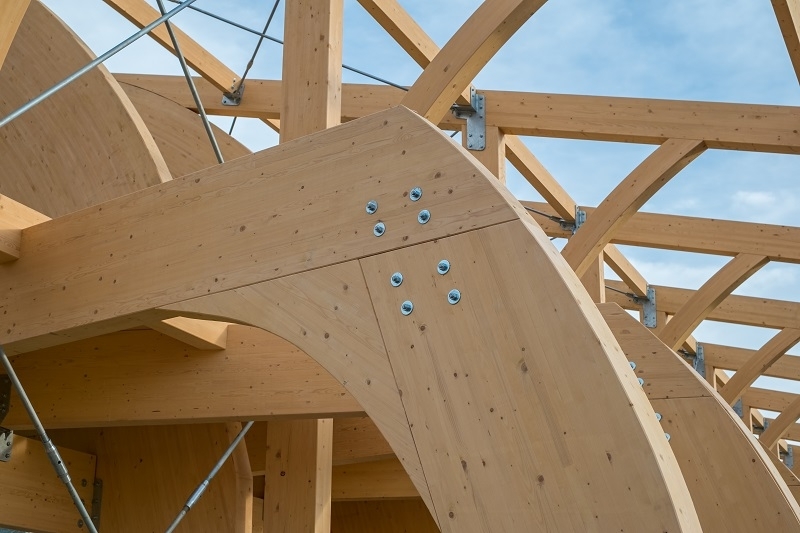All You Need to Know About Glulam
Published: 10/04/23 By: Mike Bekin
In UK construction, steel and concrete are common building materials. Strong, durable and reliable, it is really no surprise that we see these two all the time! But they are not the most eco-friendly options out there. If you are looking to earn some green points when building, it is wise to look for alternatives which are kinder to the planet and more abundantly available. Enter Glulam.
What is Glulam?
Glulam is the abbreviated name for glued laminated timber. Unlike timber straight from the tree, e.g. Oak or Ekki, Glulam is structurally engineered to create high-performance properties. Many different layers of planed timber are glued together using heat and an adhesive which is moisture-resistant and incredibly durable, creating one single, huge plank of “wood”.
It was first seen in European construction in the late 1890s and was patented in Switzerland in 1901. Since then, it has been used in a wide variety of domestic and commercial spaces, becoming a notable alternative to steel and concrete.
What Are the Characteristics of Glulam?
As it is comparable with steel and concrete, it probably comes as no surprise that Glulam is super strong! By combining many layers of timber, the end product created is stable, durable and can handle a lot of weight without a creak. It is also fairly light, especially when compared to other building materials, and easy to fix, making it a perfect match for bridge projects. Glulam is fire-resistant, versatile and has a lot of aesthetic appeal.

Why is Glulam a Sustainable Construction Material?
Aside from its beneficial properties, Glulam is often used because of its sustainability. The timber is sourced from independently certified sustainably managed forests, where reforestation and the environmental impact of felling trees are top priorities. These are some of the best-managed forests in the world, so Glulam is already off to a good start.
There is also the fact that timber is renewable, whereas both concrete and steel are not. Trees, as long as we harvest them correctly, will continue to grow and never run out.
It is also important to note that Glulam production and treatment use less energy than other building materials. This in turn releases less CO? into our atmosphere, giving Glulam a smaller carbon footprint. Green points all around!
Environmental impacts comparison:
| Beam | Glulam | Steel | Concrete |
|---|---|---|---|
| Greenhouse effect | 1 | 13 | 8 |
| Acidification | 1 | 3 | 3 |
| Eutrophication | 1 | 2 | 1 |
Above table based on the following conditions: Functional unit = simply supported roof beam with span 12 m, incline 8°, reliability class 2, service class 1. Same load assumptions and deflection parameters (l/200) in all three design cases. In the steel and concrete alternatives, 50% of the steel is assumed to be recycled.
Glulam Building Applications
The usual purpose of Glulam is to create frames for buildings in place of concrete or steel. Because glulam also has aesthetic appeal, the beams are often left exposed and become a decorative feature as well as a functional must-have. It is also common to see Glulam used for single beams, such as lintels above doorways and ridge beams.
Source Sustainable Glulam With EcoChoice
If you think that Glulam is the ideal choice for your construction project, find it sustainably with EcoChoice. Working with sustainably managed forests, we can ensure all your timber is sourced responsibly with low-impact transport and carbon certification. If you would like to learn more or source Glulam for your project, get in touch with us today!
Images: Roberto Sorin / Shutterstock.com, Timelynx / Shutterstock.com
Environmental impact table: Swedishwood.com
